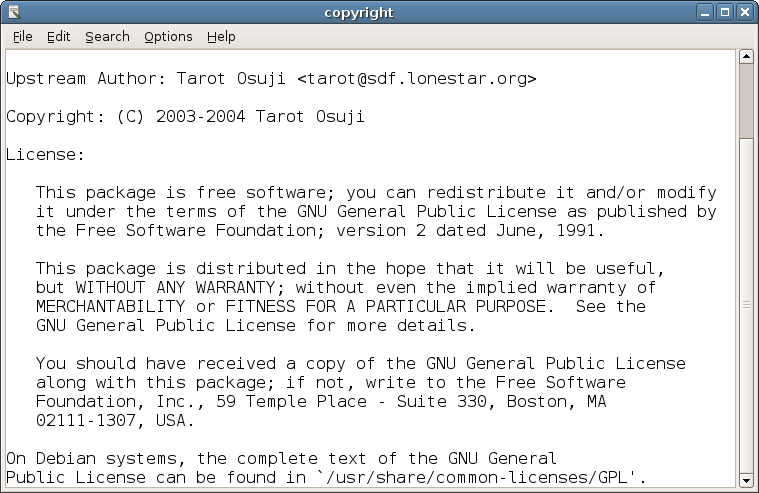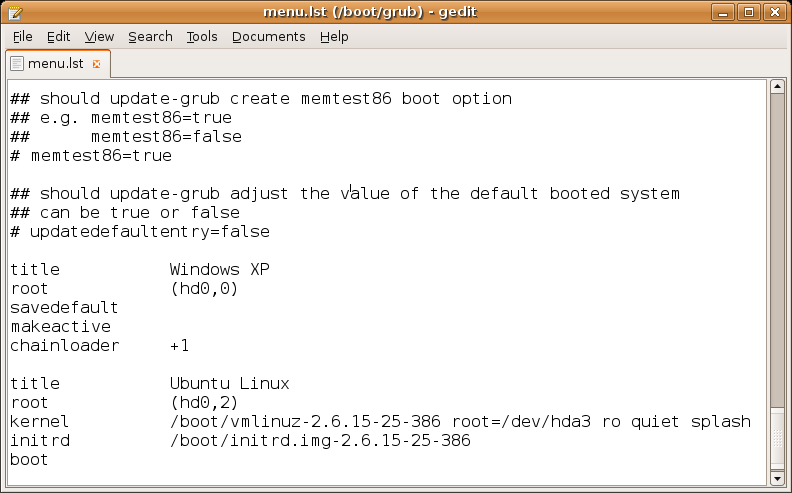|
WIN.INI
WIN.INI is a basic INI file that was used in versions of the Microsoft Windows operating environment up to Windows 3.11 to store basic settings at boot time. By default, all font, communications drivers, wallpaper, screen saver, and language settings were stored in WIN.INI by Windows 3.x. Many of these settings were honored in Windows 9x, although the files had begun to be phased out in favor of the Windows registry. Windows XP still acknowledged some entries in the WIN.INI file to provide backwards compatibility with older 16-bit applications. However, when a fresh install of XP is performed, the WIN.INI file created is initially blank, and in Windows Vista and Windows 7 the WIN.INI file was removed entirely. Prior to Windows 3.0, it was not uncommon for applications to store their configuration settings inside WIN.INI (via ). With the release of Windows 3.0 in 1990, Microsoft introduced the concept of "private" INI files (i.e. ), and some new application programming interface ... [...More Info...] [...Related Items...] OR: [Wikipedia] [Google] [Baidu] |
Make Compatible
Make Compatible is a program developed by Microsoft that is included with Windows 9x operating systems. It changes per-program system settings in Windows to allow Windows 3.1 programs that are tailored specifically to that platform to execute under newer versions. The name of the program image file for Make Compatible is , and it is stored in the directory. Options When it is invoked, one can choose the name of the Windows 3.1 application program image file using the "Choose Program" option on the "File" menu. After the program image file is chosen, Make Compatible by default displays a list of five options that can be set to alter the behaviour of Windows for that program when it is executed: *Don't spool to enhanced meta files *Give application more stack space *Lie about printer device mode size *Lie about Windows version number *Windows 3.1-style controls An advanced options mode, selectable via the "Advanced Options" selection on the "File" menu presents a longer list of ... [...More Info...] [...Related Items...] OR: [Wikipedia] [Google] [Baidu] |
Windows 9x
Windows 9x is a generic term referring to a line of discontinued Microsoft Windows operating systems released from 1995 to 2000 and supported until 2006, which were based on the kernel introduced in Windows 95 and modified in succeeding versions, with its underlying foundation based on MS-DOS. The first version in the 9x series was Windows 95, which was succeeded by Windows 98 and then Windows Me, which was the third and last version of Windows on the 9x line, until the series was superseded by Windows XP. Windows 9x is predominantly known for its use in Desktop computer, home desktops. In 1998, Windows made up 82% of operating system market share. The internal release number for versions of Windows 9x is 4.x. The internal versions for Windows 95, 98, and Me are 4.0, 4.1, and 4.9, respectively. Previous MS-DOS-based versions of Windows used version numbers of Windows 3.x, 3.2 or lower. Windows NT, which was aimed at professional users such as networks and businesses, used a sim ... [...More Info...] [...Related Items...] OR: [Wikipedia] [Google] [Baidu] |
Sysedit
Sysedit () is a specialized text/ASCII editor for core Microsoft Windows configuration files (such as , , , , and ). This executable is installed in the Windows system directory: (Windows 3.x and 9x editions) or (Windows NTx editions). Sysedit was bundled with and automatically installed by every version of Windows from Windows 3.0 up to Windows 98 SE. Support was discontinued with Windows Me. At the time of its initial release, Sysedit was commonly used to demonstrate multiple document interfaces (MDI). It opens all of the aforementioned configuration files at once in separate daughter windows whenever launched. It still uses the System font Web typography, like typography generally, is the design of pages their layout and typeface choices. Unlike traditional print-based typography (where the page is fixed once typeset), pages intended for display on the World Wide Web have additiona ... from older versions of Windows. Other Microsoft operating systems that include Sysedit ... [...More Info...] [...Related Items...] OR: [Wikipedia] [Google] [Baidu] |
SYSTEM
A system is a group of interacting or interrelated elements that act according to a set of rules to form a unified whole. A system, surrounded and influenced by its open system (systems theory), environment, is described by its boundaries, structure and purpose and is expressed in its functioning. Systems are the subjects of study of systems theory and other systems sciences. Systems have several common properties and characteristics, including structure, function(s), behavior and interconnectivity. Etymology The term ''system'' comes from the Latin word ''systēma'', in turn from Greek language, Greek ''systēma'': "whole concept made of several parts or members, system", literary "composition"."σύστημα" , Henry George Liddell, Robert Scott, ''A Greek–English Lexicon'', on Pers ... [...More Info...] [...Related Items...] OR: [Wikipedia] [Google] [Baidu] |
MSConfig
MSConfig (officially called System Configuration in Windows Vista, Windows 7, Windows 8, Windows 10, or Windows 11 and Microsoft System Configuration Utility in previous operating systems) is a system utility to troubleshoot the Microsoft Windows startup process. It can disable or re-enable software, device drivers and Windows services that run at startup, or change boot parameters. It is bundled with all versions of Microsoft Windows operating systems since Windows 98 except Windows 2000. Windows 95 and Windows 2000 users can download the utility as well, although it was not designed for them. Uses MSConfig is often used for speeding up the Microsoft Windows startup process of the machine. According to Microsoft, MSConfig was not meant to be used as a startup management program. Features MSConfig is a troubleshooting tool which is used to temporarily disable or re-enable software, device drivers or Windows services that run during startup process to help the user determine the ... [...More Info...] [...Related Items...] OR: [Wikipedia] [Google] [Baidu] |
Text Editor
A text editor is a type of computer program that edits plain text. An example of such program is "notepad" software (e.g. Windows Notepad). Text editors are provided with operating systems and software development packages, and can be used to change files such as configuration files, documentation files and programming language source code. Plain text and rich text There are important differences between plain text (created and edited by text editors) and rich text (such as that created by word processors or desktop publishing software). Plain text exclusively consists of character representation. Each character is represented by a fixed-length sequence of one, two, or four bytes, or as a variable-length sequence of one to four bytes, in accordance to specific character encoding conventions, such as ASCII, ISO/IEC 2022, ISO/IEC 2022, Shift JIS, UTF-8, or UTF-16. These conventions define many printable characters, but also whitespace character, non-printing characters th ... [...More Info...] [...Related Items...] OR: [Wikipedia] [Google] [Baidu] |
Multiple Document Interface
A multiple-document interface (MDI) is a graphical user interface in which multiple windows reside under a single parent window. Such systems often allow child windows to embed other windows inside them as well, creating complex Hierarchy#Nested hierarchy, nested hierarchies. This contrasts with single-document interfaces (SDI) where all windows are independent of each other. Comparison with single-document interface In the usability community, there has been much debate about whether the multiple-document or single-document interface is preferable. Software companies have used both interfaces with mixed responses. For example, Microsoft changed its Microsoft Office, Office applications from SDI to MDI mode and then back to SDI, although the degree of implementation varies from one component to another. SDI can be more useful in cases where users switch more often between separate applications than among the windows of one application. MDI can be confusing if it has a lack of infor ... [...More Info...] [...Related Items...] OR: [Wikipedia] [Google] [Baidu] |
Windows Registry
The Windows Registry is a hierarchical database that stores low-level settings for the Microsoft Windows operating system and for applications that opt to use the registry. The kernel, device drivers, services, Security Accounts Manager, and user interfaces can all use the registry. The registry also allows access to counters for profiling system performance. In other words, the registry or Windows Registry contains information, settings, options, and other values for programs and hardware installed on all versions of Microsoft Windows operating systems. For example, when a program is installed, a new subkey containing settings such as a program's location, its version, and how to start the program, are all added to the Windows Registry. When introduced with Windows 3.1, the Windows Registry primarily stored configuration information for COM-based components. Windows 95 and Windows NT extended its use to rationalize and centralize the information in the profusion of ... [...More Info...] [...Related Items...] OR: [Wikipedia] [Google] [Baidu] |
Configuration File
A configuration file, a.k.a. config file, is a computer file, file that stores computer data, data used to configure a software system such as an application software, application, a server (computing), server or an operating system. Some applications provide a tool to create, modify, and verify the syntax of their configuration files sometimes via graphical user interface (GUI). For context, system administrators may be expected to create and modify plain text, text config files via a text editor. For server processes and operating-system settings, there is often no standard tool, but operating systems may provide graphical interfaces such as YaST or debconf. Some computer programs only read their configuration files at Booting, startup. Others periodically check the configuration files for changes. Users can instruct some programs to re-read the configuration files and apply the changes to the current process, or indeed to read arbitrary files as a configuration file. There ar ... [...More Info...] [...Related Items...] OR: [Wikipedia] [Google] [Baidu] |


